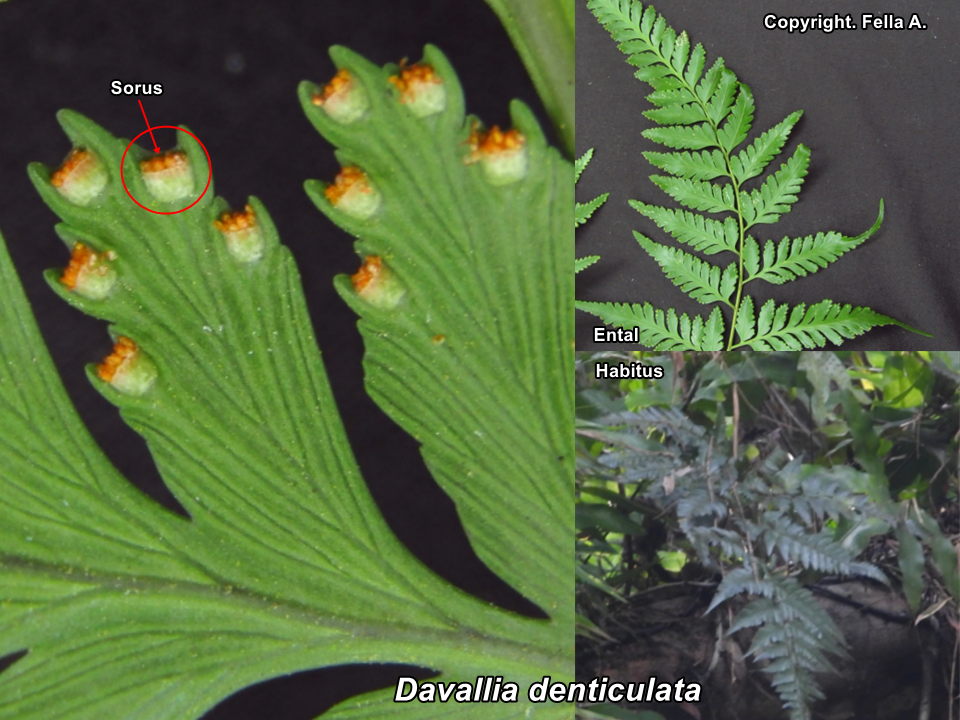Davallia denticulata
(Burm.f.) Mett.
Aspleniaceae
Nama : Paku-pakuan.
Deskripsi : Epifit, atau terestrial. Rimpang pendek, bersisik, coklat gelap. Ental majemuk, dengan anak daun pada rakis, meyirip; tegak atau menjuntai; ental fertil dan steril memiliki bentuk yang sama; permukaan atas anak daun kehijauan terang, permukaan bawah anak daun hijau muda; menjangant. Ental fertil memiliki sorus pada anak daun bagian bawah pada sudut cangap. Sori bulat, hijau kecoklatan pada bagian yang pecah atau kaliptra.
Ekologi : Persebaran alami dari wilayah Asia Tropis, Hainan, sampai Queensland bagian Timur, termasuk kawasan Malesia. Pada umumnya tumbuh pada hutan dataran rendah sebagai epifit pada pohon inang atau terestrial.
Kegunaan : Jenis ini berpotensi sebagai tanaman hias untuk pekarangan atau lanskap taman kota. Referensi: Agatha et al., 2019.

